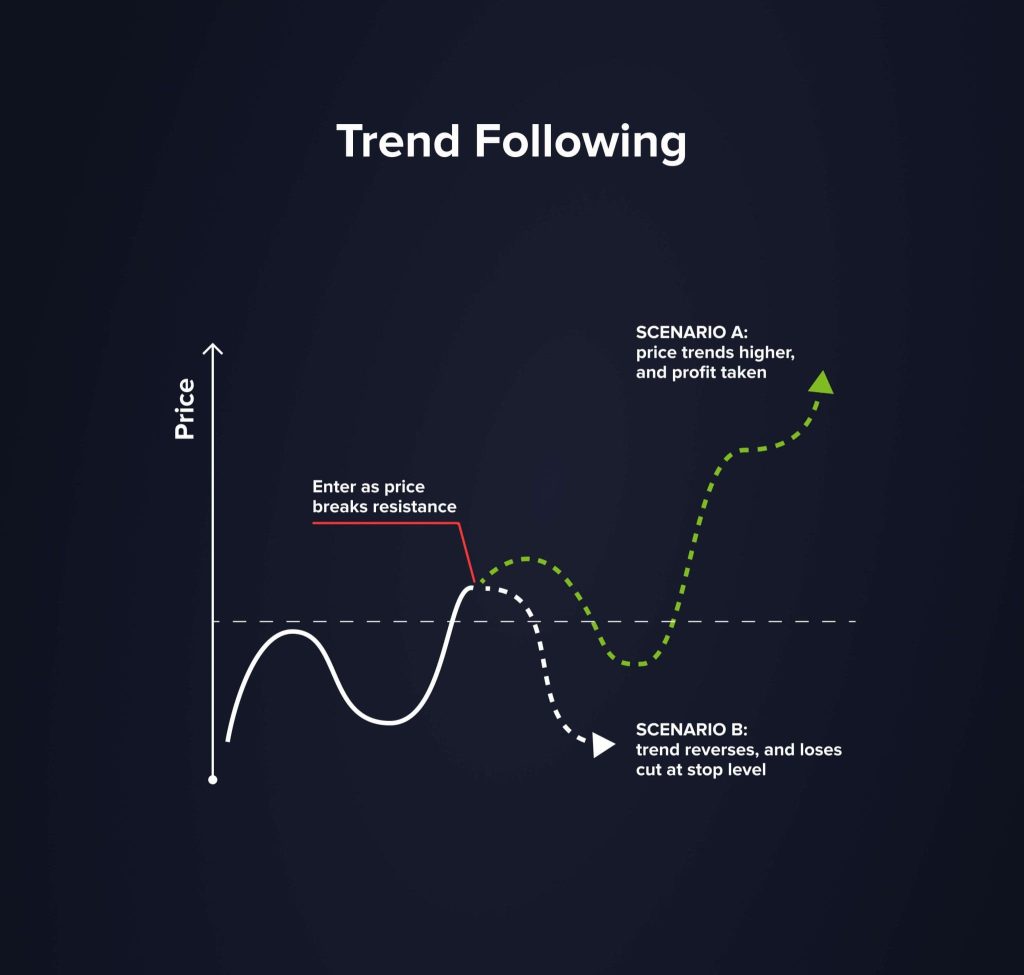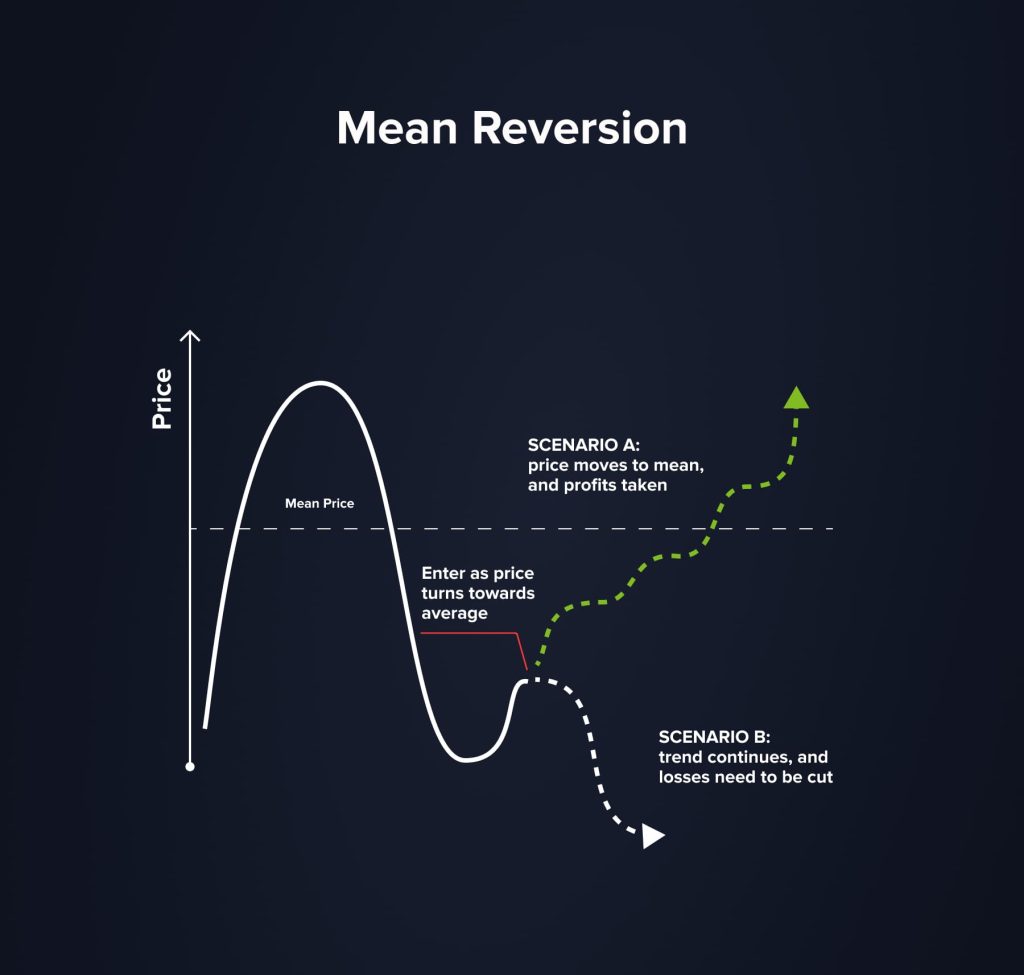
Top 15 Most Popular Trading Strategies in 2026
Contents
Trading strategies are methods to buy and sell assets with discipline, hoping to make money but also trying not to lose too much. In 2026, traders rely both on fast tactics (like scalping and momentum trading) and long-term ones (like trend-following and position trading).
In 2026, technology will be the main difference.
Even retail traders now have widespread access to real-time data feeds, AI-assisted analysis, and automated trade execution systems, supported by advanced trading indicators that help refine entry and exit points.
Here are 15 popular strategies, what makes them special, and when they work best.
The ABCs of Trading Strategies
Before we talk about the popular trading strategies in 2026, it’s essential to understand what’s the basic purpose of each trading strategy and why they matter.
A trading strategy is a detailed plan that guides traders in rapidly evolving markets. By following a set of specific rules, traders avoid making decisions based on emotions and instead use logic, data, and self-discipline, a principle deeply rooted in trading psychology. This clear approach helps traders avoid impulsive decisions and work towards consistent success.
Choosing the right strategy is like picking the best tool for a specific job. If you’re investing long-term, position trading is about slow and steady growth over months or years, but now usually enhanced with AI portfolio tracking. For quick profits, you might go for day trading or scalping, which are short-term strategies. Your comfort with risk matters, too. Careful traders usually stick to familiar markets like the stock or forex market. Meanwhile, the ones with a higher risk appetite might explore riskier options like AI-tied tech stocks, cryptocurrencies or high-leverage derivatives.
It’s crucial to understand the main ideas of each strategy and see how they fit your personal goals, the amount of time you plan to invest, and your comfort level with risk. Knowing these aspects will help you feel more secure in the markets. The strategies below aren’t in any specific order, but each has earned its place among the most widely used and practical approaches in 2026.
15 Most Effective Trading Trading Strategies for 2026
Here’s a quick overview of the 15 most popular trading strategies for 2026 before discussing each of them in detail:
Day Trading – Buying and selling assets during the same trading day
Momentum Trading – Capitalizes on strong price movement and trading volume to ride short bursts
Scalping – Executes numerous small trades during the day to catch minimal price moves
Trend Following – Identifies downward and upward movements for long-term gains prospects
Mean Reversion – Believes that prices will tend towards their average over time
Position Trading – Long-term strategy based on major market trends and fundamentals
Arbitrage – Takes advantage of the price differences of the same asset on different platforms. Common forms include triangular arbitrage in FX or crypto markets.
Swing Trading – Focuses on medium-term price movements over days or weeks through technical analysis
High-Frequency Trading – Makes thousands of trades in less than seconds through algorithms
Pair Trading – Goes long on one asset and short on the other, usually on correlated ones
Market Making – Simultaneously quotes buy and sell prices, injecting liquidity
Dollar-Cost Averaging – Invests fixed amounts regardless of price fluctuations
Options Strategies – Applies instruments like covered calls or spreads to manage risk and reward
Breakout Trading – Enters positions when price breaks out of resistance/support levels
News Trading – Reacts to events and economic news to capture market movements
Fast (seconds to hours):
- Scalping
- Day trading
- News trading
- Momentum trading
- Breakout trading
Medium (days to weeks):
- Swing trading
- Mean reversion
- Pair trading
Long-term:
- Trend-following
- Position trading
- Dollar-cost averaging
- Options strategies
- Arbitrage (short but also used strategically)
- Market making
- High-frequency trading
We can also have a pros/cons table for at least 3 strategies (ex: Day Trading, Swing, DCA).
Day Trading
Day trading is the practice of purchasing and selling assets on the same day to profit from little fluctuations in price. It steers clear of sudden threats from events or news.
Why it works in 2026:
Real-time data, swift execution, sophisticated charting, and AI alerts are features of modern platforms that facilitate pattern recognition and prompt action.
Watch out for this:
- High return, high risk.
- Requires risk management, discipline, and quick judgments.
- Not recommended for beginners without a strategy.
Tip: Trade during periods of high liquidity and use tight stop-losses. To better control risk during abrupt intraday fluctuations, think about implementing volatility filters or AI-based dynamic stop-loss systems.
Momentum Trading
Momentum trading involves purchasing rising assets and selling falling ones, much like surfing a wave. The concept is that, at least in the short term, anything moving in one direction will likely continue.
Why it works in 2026:
AI tools and real-time data accelerate traders’ ability to identify price changes, much like automated algorithmic trading systems that detect momentum bursts before human traders do. It performs well in markets with a lot of volatility and headlines, like tech, cryptocurrency, infrastructure, and clean energy, where price surges often follow major headlines or policy shifts.
Watch out for this:
- Misleading indicators in sideways markets.
- Abrupt reversals, which can occur after macro data releases – having sound hedging practices will help.
- Over-reliance on previous signals – constantly monitor the volume and the latest news.
Tip: Use trailing stop-losses to lock in gains without breaking a strong trend. To verify momentum strength, combine conventional volume and RSI analysis with AI sentiment indicators (derived from news or social data).
Scalping
Scalping is a quick trading technique that focuses on minor price differences brought on by spreads or order movements. Scalpers constantly monitor order book data to detect these micro-movements in real time. Trades last seconds or minutes, aiming for fast, modest earnings.
Why it works in 2026:
Scalping is still common because of its quick execution and huge, liquid markets (like FX). Technology makes it easier to spot micro-swings.
AI-powered execution systems and low-latency brokers with almost zero spreads increase its efficacy in 2026. To identify transient imbalances, traders now employ real-time order book AI and microstructure analytics.
For scalpers looking for steady price movement, tokenized market extensions (such as 24/7 synthetic assets) and cryptocurrency volatility also offer new opportunities.
Watch out for:
- Fast decision-making and a lot of screen time are necessary.
- Brokerage costs might mount up, especially if the spread in trading widens during volatile periods.
- It works best with inexpensive trading platforms.
You may also like

Tip: Scalping is all about speed and accuracy. Select platforms and times with tight spreads and high liquidity. To reduce slippage, trade during periods of high liquidity, use brokers with cloud-based execution or server co-location, and rely on AI latency monitors.
Trend Following
The basic idea behind trend following is to follow the market movements, whether it be upward or downward, and to remain in the trade for as long as the pattern continues.

Why it works in 2026:
Real-time sentiment tools and charts driven by AI make spotting reliable patterns in commodities, cryptocurrencies, and stocks easier. AI-powered charts and real-time sentiment tools make it simpler to identify trustworthy patterns in stocks, commodities, and cryptocurrencies, particularly for traders utilizing diversified ETF trading strategies to monitor overall market trends.
This strategy consistently gains traction due to long-term trends that have emerged around themes like interest-rate normalization, the demand for renewable energy, and the expansion of AI infrastructure.
In order to find consistent directional momentum across a variety of asset classes, including stocks, commodities, and tokenized indexes, traders now employ AI sentiment aggregators and machine learning regression models.
Watch out for:
- False breakouts.
- Late entries lowering profit.
- Requires confidence and patience when facing minor setbacks.
Tip: Avoid trend-following in unstable markets; instead, employ it when the price is being driven by apparent momentum or significant events. To help differentiate between short-term price spikes and real structural movements, combine trend-following with AI volatility filters or macro sentiment dashboards.
Mean Reversion
The idea behind mean reversion is that prices will eventually settle back to their historical mean. Traders purchase below the mean and sell above it in order to profit when prices normalize.

Why it works in 2026:
Modern charting simplifies the identification of overbought or oversold positions, particularly in range-bound markets.
As markets move into post-tightening normalization cycles in 2026, mean reversion strategies are seeing a resurgence in popularity. Many assets exhibit more stable oscillations rather than sharp one-way movements, which is ideal for this strategy since interest rates are predicted to decline gradually.
More accurate than traditional Bollinger Bands, modern trading platforms now feature machine learning-calibrated volatility bands and AI range detection tools to help identify overbought or oversold levels.
The strategy performs particularly well in commodities and foreign exchange markets, where cyclical corrections are predictable.
Watch out for:
- Major news events can break patterns.
- Does not function effectively in trending markets.
- AI tools can interpret structural shifts as short-term anomalies.
Tip: Use stop-losses in the event that the price deviates from the mean and stays in sideways markets.
Position Trading
In position trading, assets are held for weeks, months, or even years. It uses technical methods to time entry and exits, but fundamental analysis is its mainstay.
Why it works in 2026:
Long-term traders can make better decisions across markets if they have access to real-time macro data, earnings reports, and sentiment tools. Strong fundamentals are preferable to short-term noise for position traders as central banks enter rate-cut cycles and AI-driven growth industries (such as semiconductors, green tech, and robotics) shape long-term trends.
In order to help investors align their positions with changes in the economy and earnings cycles, many platforms now incorporate AI macro forecasting models and automated earnings trackers.
Beyond traditional stocks, tokenized assets and round-the-clock international markets have made diversified, long-term positions more accessible.
Watch out for:
- Patience and a strong sense of conviction are necessary for extended holding periods.
- Though frequently disregarded, short-term volatility is nonetheless essential to keep an eye on.
Tip: It is most effective when backed by solid fundamentals and a distinct long-term market trend. Keep an eye on trends that will be significant long-term drivers in 2026, particularly those related to the adoption of AI, infrastructure improvements, and global energy shifts.
Arbitrage
Arbitrage is the practice of purchasing an asset on one market at a discount and selling it on another at a premium in order to benefit from the difference.
Why it works in 2026:
Even though most price differences close rapidly, there are still opportunities for arbitrage in 2026 thanks to the advancements in AI latency detection tools, tokenized assets, and cross-exchange trading.
There are still slight price differences between cryptocurrencies and decentralized exchanges, particularly during times of high volatility or liquidity migration.
FX-traded stablecoins and synthetic commodities, where pricing mechanisms still lag across venues, have also presented new opportunities for traditional markets.
Previously impossible for manual traders, AI bots can now scan multiple exchanges in real time to find micro-mispricings before they close. Use AI cross-venue scanners and low-latency VPS servers to minimize delay.
Watch out for:
- Delays can eliminate profits; therefore, timing is crucial.
- Slippage and fees could reduce gains.
You may also like

Tip: For a higher chance of spotting price gaps, focus on marketplaces with slower price movements or smaller trade volumes.
Swing Trading
As a compromise between day and position trading, swing trading seeks to exploit short-to-medium-term price changes, usually occurring over a few days to several weeks.
Why it works in 2026:
It allows traders to use support and resistance levels for essential entrances and exits, allowing them to respond to market trends without the stress of making immediate decisions. It gains from volatility clustering analytics, predictive support/resistance mapping, and AI-assisted chart pattern recognition in 2026, which aid in more accurate entry and exit zone identification.
The strategy performs particularly well in large-cap cryptocurrency assets, energy markets, and AI-driven equity sectors where distinct swing patterns emerge in response to macro news, liquidity changes, and earnings announcements.
Watch out for:
- Too quick for long-term investors and too slow for day traders.
- Calls for patience and strategic timing.
- Performs best in markets that are trending or somewhat unstable.
Tip: Perfect for time-constrained traders who nevertheless wish to profit from market movements using organized setups. Combine AI-based signal scanners with classic swing indicators like moving averages.
High-Frequency Trading (HFT)
High-frequency trading takes advantage of minute price variations across markets by placing thousands of orders in milliseconds using robust algorithms.
Why it works in 2026:
HFT’s lightning-fast execution and low latency across trading systems allow it to maintain its dominance in the equity market.
Once restricted to stocks, HFT is now branching out into tokenized bonds, digital assets, and cross-venue arbitrage, all of which still exhibit micro-price inefficiencies.
Businesses can now dynamically modify exposure in real time thanks to the growing integration of AI risk-control modules, which lowers the risk of flash crashes that were prevalent in previous years.
Watch out for:
- May result in “flash crashes” or volatility.
- Not available to individual traders – primarily institutional.
- Demands strict adherence to regulations and sophisticated infrastructure.
Tip: Although it is impractical for individual traders, understanding HFT helps explain several of the contemporary marketplaces’ swift price fluctuations.
Pair Trading
Pair trading is the practice of purchasing one historically connected asset and shorting another to make a profit when the price difference between the two closes.
Why it works in 2026:
This approach is beneficial in bullish and bearish markets since it is market-neutral, particularly with the widespread availability of statistical arbitrage bots and correlation tracking tools powered by AI.
In addition to stocks and ETFs, traders now use this strategy for tokenized assets, AI-sector stocks, and commodity pairs that represent the energy transition theme, such as lithium vs. nickel futures.
Watch out for:
- Needs precise correlation analysis.
- Divergence can last longer than anticipated.
- Works best with liquid, low-volatility pairs.
Tip: Before trading, verify the link using backtesting and correlation metrics. Focus on assets within the same sector to maintain logical relationships, like Nvidia vs. AMD.
Market Making
Market makers ensure market liquidity while making a profit from the bid-ask spread by quoting both buy and sell prices.
Why it works in 2026:
Market makers, who often get a consistent income from spreads, keep trade flowing, particularly in less liquid assets or during volatile times.
New opportunities for on-chain market making, where liquidity providers receive fees in tokenized assets and stablecoins, have also been made possible by the growth of decentralized finance (DeFi).
Watch out for:
- Unwanted inventory may arise from significant, rapid price fluctuations.
- Requires ongoing risk management and price changes.
Tip: Although it is primarily used by institutions, knowledge of market-making helps explain spread dynamics and price stability.
Use AI volatility dashboards/spread-forecasting tools to time limit orders more efficiently, especially during high-impact announcements.
Dollar-Cost Averaging (DCA)
Dollar-cost averaging entails investing a set amount at regular intervals, regardless of market conditions, purchasing more at low prices and less at high ones.
Investors can now automatically raise contribution sizes to preserve real purchasing power with inflation-adjusted DCA tools.
In order to provide investors with more diversified exposure, DCA is also being used in areas other than stocks, such as tokenized ETFs, fractional real estate, and cryptocurrency index funds.
Why it works in 2026:
DCA is perfect for long-term, passive investors since it helps even out volatility and lowers the chance of bad market timing.
Watch out for:
- Less successful in markets that are rapidly expanding.
- Works best over extended periods of time and does not guarantee earnings.
Tip: To create wealth gradually and stress-free, automate DCA with periodic investments in stocks, ETFs, or crypto. To lessen reliance on a single market cycle in 2026, think about incorporating multi-asset DCA portfolios (stocks, cryptocurrencies, and commodities).
Options Strategies
Options grant traders the right, but not the obligation, to purchase or sell an asset within a given time frame and at a predetermined price. Such strategies include simple calls and puts to more complex configurations like iron condors or straddles.
Why it works in 2026:
With more traders having access to low-cost platforms and instructional resources, options provide flexibility in hedging, speculation, and leverage enhancement.
Tools that employ real-time Greeks optimization and machine-learning volatility forecasting assist traders in developing more accurate strategies.
The range of options-based strategies has also been extended beyond traditional equities due to the popularity of volatility ETFs, tokenized options, and AI-linked sector derivatives.
Watch out for:
- Complexity increases the risk.
- Requires understanding of strike pricing, volatility, and time decay.
- Multi-leg trades may become costly or confusing.
- AI tools provide estimates, not guarantees; overconfidence can lead to excessive leverage.
Tip: First, learn the fundamentals. The secret to success with options is knowing how time, price, and volatility interact.
Breakout Trading
The goal of breakout trading is to see the price move above significant levels of support or resistance in the hopes that momentum will push it higher.
Why it works in 2026:
Real-time alerts and pattern recognition alerts help traders identify breakouts more quickly and take action before the trend picks up speed.
A year of frequent volatility events, such as interest rate changes, geopolitical tensions, and quick shifts between the tech, energy, and AI sectors, is advantageous to traders because it frequently leads to significant breakouts.
Watch out for:
- Common false breakouts.
- Useful with confirmation tools and strict stop-losses.
Tip: To prevent fakeouts, use candlestick patterns or volume spikes to confirm breakouts.
To ensure that a breakout is backed by genuine momentum rather than just transient noise, look for convergence between chart structure, sentiment indicators, and macro event calendars.
News Trading
The goal of news trading is to profit from price changes brought on by significant events, such as central bank statements, earnings reports, and changes in the geopolitical landscape.
Why it works in 2026:
Traders can respond to market-moving events more quickly with the help of economic calendars, AI-curated sentiment tools, and real-time news feeds.
Automated “news reaction bots” that open or close positions based on natural language analysis of headlines and economic reports are now integrated into many retail platforms.
For experienced traders, there are frequent short-term opportunities due to the high volatility surrounding AI regulation, changes in fiscal policy, and tech earnings.
Watch out for:
- High volatility may cause whipsaws or slippage.
- Good news does not automatically imply that prices will continue to rise.
- Strict stop-losses and quick implementation are crucial.
Tip: Before entering, gauge the strength of the reaction using real-time volatility indicators and AI-based news sentiment trackers.
Pay attention to events that have a track record of influencing markets, such as significant updates to AI/energy policy, CPI releases, or FOMC decisions.
Avoid trading when there are conflicting or unclear news releases unless you have a tried-and-true plan in place.
Trading Strategy Comparison Table
| Strategy | Timeframe | Best for | Watch out for |
| Day Trading | Same Day | Active traders, Volatility | Stressful, costly, needs your full attention |
| Momentum Trading | Short-term | Volatile markets (crypto, tech) | Trends can reverse, fake signals happen |
| Scalping | Seconds to minutes | Foreign exchange and liquid markets | Needs speed, small price differences are key |
| Trend Following | Weeks to months | Strong trending assets | Doesn’t work in sideways markets |
| Mean Reversion | Days to weeks | Range-bound markets | Prices can suddenly break out of the range |
| Position Trading | Months to years | Long-term investors | Takes patience, ignore short-term ups and downs |
| Arbitrage | Instant to short | Crypto, illiquid assets | Fees/slippage can kill your profits |
| Swing Trading | Days to weeks | Part-time traders | Stay disciplined, watch for fake moves |
| High-Frequency | Milliseconds | Institutions, quant funds | Not for regular people, needs pricey tech |
| Pair Trading | Weeks | Correlated stocks/ETFs | Prices can stay apart for a while |
| Market Making | Continuous | Liquidity providers | Needs capital, computer systems |
| Dollar-Cost Averaging | Long-term | Passive Investors | You might miss out on quick gains |
| Options Strategies | Flexible | Hedging, leverage | Complex, time runs out, spreads can be expensive |
| Breakout Trading | Short-term | Volatile events, chart setups | Fakeouts happen, prices can whip back and forth |
| News Trading | Minutes to hours | High-impact events | Needs speed, easy to misread the situation |
How to Pick the Best Strategy for You
There isn’t a single trading strategy that works for everyone. Your objectives, level of risk tolerance, time commitment, and level of comfort with volatility will all influence the optimal strategy. Selecting the right approach is similar to choosing the right gear for a trip; both your driving style (trading style) and the terrain (market circumstances) are important.
Recognize Your Risk Tolerance
Do you like something more stable, or are you comfortable with sudden ups and downs? Position trading and dollar-cost averaging are two tactics that can work better for you if you’re a risk-averse person. Day trading or scalping may be more appropriate for you if you like making quick judgments and placing large bets.
Assess the Market
TheThe state of the market is constantly changing – markets in 2026 are shaped by interest-rate reversals, rapid AI sector growth, and geopolitical shifts. While mean reversion or news trading may perform better in choppy conditions, trend-following tactics might excel in a robust, directed market. It’s crucial to be adaptable and adjust your approach to the state of the market.
Try Before Trading
Create a demo account first. Try out multiple strategies without taking any risks and see what suits your personality. It’s among the simplest methods for learning without making costly errors.
Continue Learning and Adapting
Just as markets change, so should you. Politics, economic events, and technological advancements all have an impact on how well strategies work. Smart traders remain curious, never stop learning, and modify their strategies as needed.
Be Wary of Scams
Avoid anything that makes claims of “secret trading hacks” or “guaranteed profits.” Scammers frequently use flashy ads and phony success tales to target new traders. If something seems too good to be true, it most likely is. Only rely on signals or advice from reliable, verified sources; conduct your own research.
Conclusion
In trading, there is no one-size-fits-all approach. Every strategy, from position trading to scalping, has advantages; the secret is to choose which one best suits your objectives, risk tolerance, and trading style.
Having a plan, controlling risk, and maintaining flexibility are the keys to success. Continue to learn, experiment, and develop through experience.
Trade wisely, and have fun!
FAQ
The safest strategies are thought to be position trading and dollar-cost averaging. They are perfect for conservative investors since they prioritize long-term growth above short-term market noise.
Since swing trading, DCA, and trend following offer more distinct entry/exit signals and require fewer judgments, they are usually the first options for newcomers. Avoid complicated or high-frequency option setups in the beginning.
Yes, a lot of traders mix strategies based on periods or market conditions. For instance, a trader may employ scalping during high-volatility news events and trend following for long-term transactions.
Use a paper trading platform or demo account. Backtesting features are available in tools like TradingView and MetaTrader, allowing you to assess performance using past data without having to risk actual capital.
Updated:
October 27, 2025
8 January, 2026
Stock Market Hours: When Does The Market Open?
Most major stock markets are open Monday to Friday, with opening times depending on the exchange and its time zone. For example, US stock markets open at 9:30 AM ET, while the London Stock Exchange opens at 8:00 AM UK time. There is no regular stock trading on weekends. Below, you’ll find a clear, practical […]



